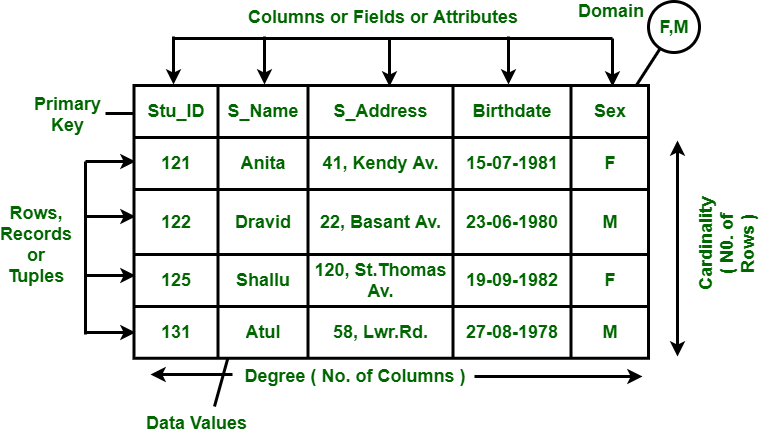Difference between Network and Relational data model
Last Updated :
16 Aug, 2022
1. Network Data Model:
It is advance version of hierarchical data model. To organize data it uses directed graphs instead of tree-structure. In this child can have more than one parent. It uses concept of two data structures i.e., Records and Sets.

In the above figure, Project is root node which has two children i.e. Project 1 and Project 2. Project 1 has 3 children and Project 2 has 2 children. Total there are 5 children i.e Department A, Department B and Department C, they are network related children as we said that this model can have more than one parent. So, for Department B and Department C have two parents i.e. Project 1 and Project 2.
2. Relational Data Model:
The relational data model was developed by E.F. Codd in 1970. There are no physical links as they are in hierarchical data model. Following are properties of relational data model :
- Data is represented in form of table only.
- It deals only with data not with physical structure.
- It provides information regarding metadata.
- At the intersection of row and column there will be only one value for tuple.
- It provides a way to handle queries with ease.

Difference between Network and Relational Data Model :
| S. No. |
Network Data Model |
Relational Data Model |
| 1. |
It organizes records to one another through links or pointers. |
It organizes records in form of table and relationship between tables are set using common fields. |
| 2. |
It organizes records in form of directed graphs. |
It organizes records in form of tables. |
| 3. |
In this relationship between various records is represented physically via linked list. |
In this relationship between various records is represented logically via tables. |
| 4. |
There is lack of declarative querying facilities. |
It provides declarative query facility using SQL. |
| 5. |
Complexity increases burden on programmer for database design as well as data manipulation. |
As physical level details are hidden from end users so this model is very simple to understand. |
| 6. |
Retrieval algorithms are complex but symmetric. |
Retrieval algorithms are simple and symmetric. |
| 7. |
There is partial data independence in this model. |
This model provides data independence. |
| 8. |
There is no inconsistency problem in updating the records because of the single instance of the child records. |
The updating of records is quite easy because of the normalization which is used to remove the redundancy in the relations. |
| 9. |
Searching for a record is easy in the network model as there are multiple access paths to reach data item. |
In the relational model, a unique, indexed key serves the purpose of searching a record. |
| 10. |
Here, is the physical existence of record relations in this model. |
It maintains logical organization of records using rows and columns and stored in relation. |
| 11. |
VAX-DBMS, DMS-1100 of UNIVAC and SUPRADBMS’s use this model. |
It is mostly used in real world applications. Oracle, SQL. |
Like Article
Suggest improvement
Share your thoughts in the comments
Please Login to comment...